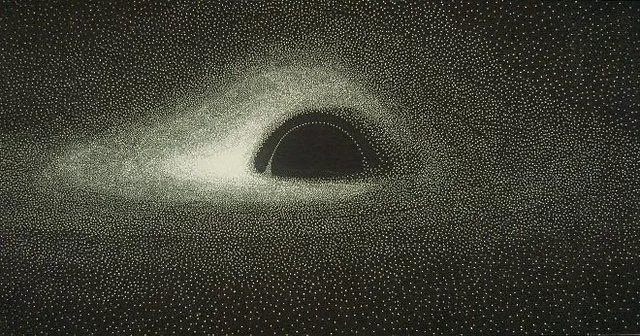The First Simulated Image of a Black Hole – A Look Back at 1978
Before the groundbreaking observations by the Event Horizon Telescope delivered the first direct image of a black hole, humanity's understanding of these enigmatic cosmic behemoths was largely theoretical. Yet, decades ago, one visionary astrophysicist embarked on a mission to bring these gravitational titans to life, not through telescopes, but through computation.
The Visionary: Jean-Pierre Luminet
In 1978, a pivotal moment in the history of astrophysics quietly unfolded. French astrophysicist Jean-Pierre Luminet, then at the Observatoire de Paris, published what is widely recognized as the first-ever simulated image of a black hole. His ambition was to visualize the extreme warping of light and space-time around a non-rotating (Schwarzschild) black hole, particularly focusing on the appearance of an accretion disk.
Crafting the Cosmic Canvas: Technology of 1978
Luminet's pioneering work was a testament to both intellectual brilliance and sheer meticulousness, given the technological constraints of the era. He utilized an IBM 7040 mainframe computer, a machine from the early 1960s, to process the complex general relativity equations. The data, outputted on punch cards, then had to be painstakingly plotted by hand onto photographic negatives using an ink plotter and Indian ink. Imagine the dedication: each curve, each distorted line, representing a photon's path around the black hole, was calculated and then individually placed to form the final image. This was a far cry from today's instant digital renders.
The Image: A Precursor to Reality
The resulting image is iconic. It depicts a black hole surrounded by a thin, glowing accretion disk. What makes Luminet's simulation so striking is its accurate representation of general relativistic effects:
- Gravitational Lensing: The light from the far side of the accretion disk is bent so intensely by the black hole's gravity that it becomes visible above and below the black hole's "shadow," creating a distorted, bright ring.
- Doppler Boosting: One side of the disk appears brighter due to the relativistic Doppler effect, as matter moving towards the observer emits light that is blueshifted and intensified.
- The Photon Sphere: While not explicitly shown as a distinct boundary, the simulation beautifully illustrates how light rays can orbit the black hole multiple times before either escaping or falling in, leading to the highly distorted appearance of the disk. Features like the smaller, bright line seen at the top of the disk are actually light from the disk that has been bent and focused by the black hole's immense gravity, showcasing the complex lensing at play.

Legacy of a Pioneer
Luminet's 1978 simulation wasn't just a technical achievement; it was a conceptual leap. It offered humanity its first visual understanding of what a black hole could look like, decades before the Event Horizon Telescope captured its stunning images of M87* in 2019 and Sagittarius A* in 2022. His work laid foundational groundwork for future theoretical and computational astrophysics, inspiring generations of scientists and capturing the public imagination. It serves as a powerful reminder that sometimes, the greatest leaps in our understanding of the universe begin not with observation, but with a daring vision and the meticulous application of scientific principles, even with the most humble of tools.




